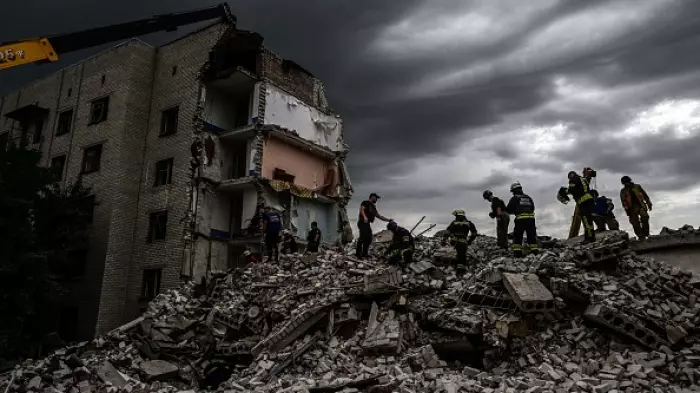Rob Campbell’s sacking as the chair of Te Whatu Ora - Health New Zealand was followed by him lobbing a number of hand grenades into the health system.
However, these were targeted primarily at the government, especially health minister Ayesha Verrall.
One grenade was his accusation that government was pulling back on ‘co-governance’. Another was his revelation that Te Whatu Ora was planning a full restructuring, which would lead to many hundreds of redundancies.
The restructuring was supposed to be put out to formal ‘consultation’ in early February, then postponed to late February, and is now delayed to late March.
Whether Campbell’s revelation leads to a changed timeframe remains to be seen.
Campbell supports this initiative because, he argues (without substantiation), there is widespread waste across the health system.
The target is what he calls “overhead roles”. In other words, non-clinical staff – generally but misleadingly taken to mean ‘management and administration’.
He also identified some reduction in clinical roles.
This is expected to be the top formal clinical leadership positions in the former district health boards.
The three positions of chief medical, nursing and allied health officers are targeted. They were pivotal to decision-making in all 20 DHBs.
The intention is to reduce these numbers. It is unclear whether this cost-cutting will extend further down the clinical leadership chain.
What is Te Whatu Ora?
My focus now, however, is on the overhead roles. It's important to understand structurally what this new gigantic national bureaucracy is.
Quite simply, it is made up of two main groups.
One is former Ministry of Health staff responsible for the planning and funding of health services, primarily through DHBs. They were transferred across.
The second group, and by far the largest, is the staff formerly employed by the abolished DHBs. Primarily, these overhead roles of the former DHBs are what the restructuring is about.
It's difficult to be precise because some accessible data is 'all employees' while other data is recorded as 'full-time equivalents' (which also includes casual staff).
The total former DHB workforce automatically transferred to Te Whatu Ora is well over 70,000.
Campbell cites a figure of around 80,000 Te Whatu Ora staff in total, including transferred health ministry staff (however, they would be in the hundreds).
By far, the majority of its staff are involved in hospital and related services. Community healthcare is largely provided privately or by non-government organisations.
Working from a ballpark figure of 75,000 former DHB staff, around 82% of them would be nurses, doctors (resident or junior and senior) and allied health professionals; that is, a 60,000 ballpark figure. Allied health professionals are made up of around 30 different small occupational groups, such as laboratory scientists and technicians, physio and occupational therapists, audiologists, podiatrists, dieticians, physiologists, perfusionists, anaesthetic technicians, psychologists and social workers.
Give or take, allied health professionals are in the ballpark of 1,500 (around 2%) of the former DHB workforce relocated in Te Whatu Ora.
So, ballpark again, this leaves around 18% or so of Te Whatu Ora’s workforce (perhaps 14-15,000) from the former DHBs in “overhead” (non-clinical) roles.
Campbell’s defence is that the disestablishment of “many hundreds of overhead roles" will enable the shifting of “hundreds of millions of dollars from overhead to frontline expenditure".
Last December, there was talk within the top health system leadership of a 25% reduction of non-clinical staff. It's suspected that this came from the then health minister Andrew Little, but it's unclear whether it was an aspirational or hard position. It's unlikely to have come from beneath the board of Te Whatu Ora.
Understanding the overhead roles
To base a restructuring of extracting “hundreds of millions of dollars” from “overhead roles” to the clinical frontline is superficial and something that a business consultant would be proud to assert.
Instead, a forensic approach is required. These “overheads” are not monolithic. Like allied health professionals, they are made up of many essential roles.
Many of these “overheads” are directly related to providing clinical services. Hospitals have services within them such as paediatric and maternity. Health professionals in these services depend on service managers to do their job.
Operating theatres and outpatient clinics depend on booking staff and positions called schedulers to function.
The same can be said for secretarial and other administrative staff that doctors and nurses depend on.
These clinical service-related functions make up a big part of Campbell’s “overheads”.
There are also organisation-wide “overheads”, such as information technology, whose support is vital for clinical work.
Payroll is complex
And then there is payroll. Outside clinical diagnosis and work, few things are as complex as payroll, with the multitude of integrated occupations working in hospitals of variable sizes and patient demand.
Payroll staff are particularly stressed employees because of serious recruitment difficulties.
Te Whatu Ora doesn’t (and previously DHBs didn’t) compete with much higher remuneration compared with other big employers and with much less grief.
Many, if not most of this 18% or so, of Te Whatu Ora’s formerly DHB-employed workforce are also among its lower paid.
In all cases, they are critical support services for health professionals to provide quality patient diagnosis and treatment. But they provide greater value than the new bureaucracy’s higher paid Star Wars-like ‘wayfarers’.
It is incomprehensible to believe that these “overheads” are the basis for the proposed cutting of hundreds of overhead roles in order to save hundreds of millions of dollars.
The highest paid, like chief executives, have already been restructured out. The only way to immediately achieve savings of the magnitude Te Whatu Ora is seeking is to cease clinical services such as orthopaedics or paediatrics in its hospitals, like those in New Plymouth, Gisborne or Timaru (or smaller).
History repeats
This is not the first time someone's tried this type of endeavour. Infamously, after the change of government in late 2008, new health minister Tony Ryall brought in a cap on the number of non-clinical positions (Campbell’s “overheads”).
Like Campbell, Ryall had a slogan: "From back office to frontline."
Ryall’s approach demeaned, devalued and demonised vulnerable and defenceless lower-profile and lower-paid staff.
It also made the work of health professionals more difficult. The legacies of that regrettable era are still with us today (including the stressed payroll systems).
Now, Te Whatu Ora is intending to repeat the three ‘ds’ of that negative process.
Why the restructuring will fail
This “overheads role” restructuring is going to fail for three main reasons.
First, once the roles directly relevant to providing specific health services (where duplication is insignificant) are discounted, the critical mass of the remaining pool of positions is simply too small to generate the hundreds of millions of dollars identified by Campbell.
Further, the scope for savings through removing duplication in IT and payroll is questionable because so much of their work is driven by both the complexity and demand-driven nature of healthcare, particularly in hospitals.
These support services are already fragile and understaffed. Savings based on removing duplication are unknown and likely to be small.
The areas most likely to involve some duplication are human resource management, communications, finances (as distinct from payroll) and policy analysis.
But, in terms of cost savings, these are ‘crumbs on the dinner table’ territory.
The second reason why this restructuring will fail is that the approach is back to front; on positions rather than processes.
The start should be looking first at processes, including process improvement.
Look at schedulers, for example. Is there anything in the way they work that suggests there is enough duplication to have fewer of them in a hospital?
Does this process focus by occupation to occupation (from secretaries to payroll staff) in the context of the hospital or health facility where they work?
It is improving processes that generates savings, rather than working from a set structural approach.
I've seen no obvious analysis done on how much duplication there is, about the variability of these “overhead roles”, the impact on the frontline if positions are removed, or what the realistic savings might be.
The restructuring is driven by assumptions, not evidence. Do the analysis first before making conclusions.
Third, the restructuring is highly top-down; the most top-down I've seen in my more than 30 years in and around the health system.
Based on a high level of predetermination, it fails to recognise that those who do the job know best how to improve it to make it more effective and efficient.
How do you improve payroll efficiency? Ask payroll staff.
It appears, unless there is a change of plan, that business consultants with no or limited experience in the role of these “overheads” will in effect drive the consultation process.
This is a recipe for failure; like getting business consultants instead of engineers to design planes.
Those who are affected by the restructuring are guaranteed to be marginalised by this approach. It's equally likely that the consultation's outcome will be poor quality, as a consequence.
For these reasons, Te Whatu Ora’s approach, based on Campbell’s revelation, is anti-union in the sense that the union responsible for this restructuring, the Public Service Association (PSA), has been marginalised to a reactive role.
Te Whatu Ora should have talked with the PSA first about defining what the problem is that it's trying to solve and, after this, what the best approach is to solve it.
It should have also engaged with health unions directly affected by this restructuring, such as the NZ Nurses Organisation and Association of Salaried Medical Specialists.
What sits behind the restructuring
What sits behind this restructuring is a back-to-front obsession with what is called FTE (full-time equivalents) containment since 2018.
It was pushed in unison by Treasury, EY consultants and some in the hierarchy of the health ministry. Discussions with some of these players have also been held with the department of the prime minister. This has helped set the scene for Te Whatu Ora’s top-down restructuring.
This shows how ill-informed the top health system leadership is.
FTE growth is driven by uncontrolled health demand growth – too many sick people. One of the biggest drivers of this growth is acute patient demand growing faster than population growth.
Te Whatu Ora’s focus needs to shift from containing FTEs to containing acute demand. In other words, focus on causes rather than consequences.
In doing this, it should consider what a senior medical specialist said to me some years ago: “I would rather be an underpaid paediatrician than an overpaid secretary.”
This story has been corrected at the author's request to change the proportion of nurses and doctors versus allied health professionals from 80% to 82% and more clearly define the category.














